We recently made toy boxes for several of our family members which were a huge success with all who received them. We made the boxes in two different shapes, a triangle one for the rooms having little space except a corner, and rectangular shaped ones for areas where the boxes could be a functional piece of furniture as well as an accent to the room. (These boxes don't have to be just toy boxes)
Rectangular Boxes
The rectangular boxes measure 24” X 11 1/2” X 15” and were cut out of ½” primed plywood using a table saw. The bottom of the boxes measure 24” X 12” with the lid being cut a little larger so there would be a little bit of an overhang, for appearances only. We assembled the boxes using wood glue and nails, slightly sinking the nails and later filling the holes with filler. After sanding the necessary areas, we painted the base colour of paint on the boxes, using a latex paint. Each box was designed and created to individually suit each family member’s personality and interests and also to match the room where the box was likely to be placed.
Triangle Boxes
The triangle boxes measured 36” X 16” X 16” with the bottoms and lids cut to the same scale. They also were cut out of ½” primed plywood. Each of these boxes were assembled and prepared using the same method as the rectangle boxes described above.
Box No. 1 - Pink Flowered Box
Materials Required:
Latex paint (pale pink) 2” Paint Brush
Latex varnish Flower and leaf stencils
Latex colours for flowers and leaves Wood glue, craft glue, small nails
(rose, mauve/purple and green) Sea sponge
Photocopied picture of child Spray adhesive
2” foam for the lid Material to cover the lid (inside and outside)
1 Self-covered button for tufting the lid Hinges (2)
Stapler, staples and fish line Hammer, screws
The entire box was painted both inside and outside using the pale pink latex paint. When the paint was dry, we stenciled flowers and leaves on the sides and the front, leaving space in the centre of the front of the box for my granddaughter’s picture. We sprayed the back of the picture with a spray adhesive before applying it to the box. We then allowed it to dry before we painted the entire box, including the picture with a latex varnish.
We measured the foam to fit the lid and then glued it to top of the lid. We then covered the foam and lid with the material we had chosen to match the box, stapling the material to the inside of the lid. For the tufting, we covered one self-covered button and using fish line, we pulled it through and stapled the fish line to the inside of the lid. We then glued the same material that we had used to cover the lid to the inside of the lid, covering the staples and completely covering the inside of the lid. We then attached the lid to the box using the two hinges using screws.
Box No. 2 - Dolphin Box
Materials Required:
Latex paint for water, sand and blending Sea sponge
(blue, grey and white) Brushes, 2”, 1” and detail brush
Latex colours for fish and name Wood glue, craft glue, small nails
(grey, black and blue) 2” foam for the lid
Vinyl for dolphins or silver metallic paint Material to cover the lid (inside & out)
Self-covered button for tufting the lid Hinges (2)
Stapler, staples and fish line
Hammer, screws
The inside of the box, as well as the water portion on the upper part of the outside of the box, was painted with a blue latex paint. While the water portion on the outside of the box was still wet, we blended white latex into the blue to give the illusion of water using gentle back and forth brush strokes. The sand portion was painted a light grey and with the sea sponge we used black to sponge on a textured effect. The fish were also painted a light grey and detailed with black, using the detail brush. We used vinyl for the dolphins on the front of the box but a silver metallic paint would work just as well. The bubbles were done by loading one side of a wet brush with blue paint and making a circle with the blue on the outside to form the bubble. The child’s name was painted in blue and highlighted with white paint.
The lid was covered in the same way as the Flowered Box.
Box No. 3 - Triangular Truck Box
Materials Required:
Various latex paints for trees, road, sky, truck and detailing (blue, white, brown, green, grey, black, red, yellow – other colours can be mixed by blending these main colours)
Latex varnish Brushes, 2”, 1” and detail brush
Small photocopied pictures of child Stapler, staples and fish line
Adhesive spray Sea sponge
2 Self-covered buttons for tufting lid Hinges (4)
2” foam for the lid Wood glue, craft glue, small nails
Material to cover the lid (inside & outside)
Hammer, screws
The inside of the box and the sky area on the outside were painted with pale blue latex paint. After the blue paint is dry on the outside of the box, white paint was sponged on to give the effect of clouds in the sky. (Wash sponge out immediately after using). Use light grey for the roadway, the birds and for some of the highlighting on the trees. After the trunks of the trees have been completed and are dry, sponge green on for the foliage. Paint truck on front of box. The sides have been finished similar to the front but instead of a truck, we have added a yellow bus on one side and a police car on the other. The small photocopied pictures of the child are placed in the windows of each of the vehicles using spray adhesive. After these are dry and all detailing is complete, varnish the entire box with a latex varnish.
Since a box with this type of design would be for a small child, the lid was done in two sections to make it easier for the child to lift. Each half of the lid was covered individually but in the same manner as the Flower Box above. Each half of the lid was attached to the box using two hinges and screws.
Box No. 4 – Medieval Box
Materials Required:
Latex paint (terracotta and beige) Sea sponge
Crackle glaze Paint Brush – 2”
Latex varnish Material for outside and inside of lid
Chain (for border around photo) Wood glue, craft glue, small nails
Child’s photocopied picture 2 hinges
Adhesive spray 2” foam for lid
Staple, stapler, fish line Self-covered button for tufting lid
Spray adhesive ¼” masking tape
Wood, approx, 6” x 2” (for name plate) Hammer, screws
The inside and the outside corners of the box were painted with the beige latex. After the paint is dry, use the ¼” masking tape to measure off the size of blocks you wish in the area of the corners. We measured the area to be 3 blocks high. We then painted the area with crackle glaze. After allowing the crackle glaze to dry for approximately one hour, we sponged on the terracotta latex paint, removing the masking tape shortly after to avoid pulling off any paint. After the paint had dried thoroughly, we masked the area we had just painted and did the center area in the terracotta latex paint. When the paint was thoroughly dry, we measured this area, dividing it with the ¼” masking tape, into the height of 4 rows. We then applied crackle glaze to this area and allowed it to set for approximately one hour before sponging on the beige latex paint. This was done on the sides and back of the box as well. We then removed the masking tape in this area. After the paint was completely dry, we sprayed the back of the picture with adhesive latex and placed it on the box. After the picture had dried on the box, we painted the entire outside of the box with the latex varnish. Measure chain to properly fit around the picture and use screws to attach to the box. The name was then painted on the wooden plaque and was attached to the box using wood glue.
Pieces of leather were appliquéd to the same material that I used to cover the inside of the lid of the medieval box. Imitation leather can also be purchased at most fabric stores for a nominal price as well as other materials which would work just as well. The lid was assembled and attached to the box in the same way as the Flower Box.
Box No. 5 – Baby Box
Materials Required:
Textured material for outside of box (white)
Material for inside and outside of lid and balloons (red)
2” foam for lid and around box Wood and craft glue, small nails
Latex paint (white) for inside of box 2 Hinges
2” brush Stapler, staples, fish line
Hammer, screws Self-covered button for tufting
Wood, painted white for baby’s name (6” x 2 ½”)
Trim for upper and lower edges of the box
String for balloons
The inside of the box and the piece of wood for the baby’s name were painted white and allowed to dry. We then measured and cut the 2” foam to fit the sides, front, back and lid of the box. The foam was glued to the outside of box, using craft glue. The textured material was attached to the box with staples and the trim was glued over this area to hide the staples on the top and bottom of the box. I then cut the oval shapes of the balloons from the excess red material and glued three large balloons and three small balloons to appear to be floating through the air on the front of the box. The puckered part of the balloon was done by gathering a running basting stitch through the top, tying off and gluing the top portion to the bottom of the oval portion of the balloon. The string was placed under the gathered portion of the balloon and glued to the white material. A white highlight was painted on the balloons using the white latex paint. We then painted “baby” on the piece of white wood before attaching with craft glue to the front of the box. This box is excellent for storing diapers and small everyday items that are constantly required for a baby.
The lid was then covered and assembled in the same way as the Flower Box.
Wednesday, April 6, 2011
Subscribe to:
Post Comments (Atom)










































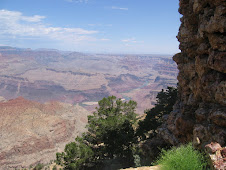
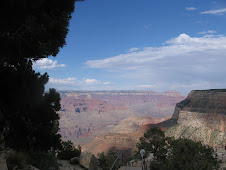
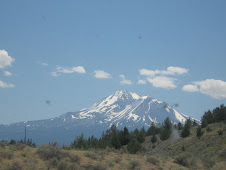



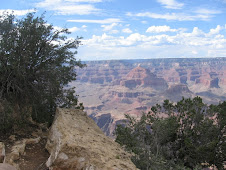
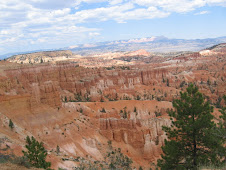
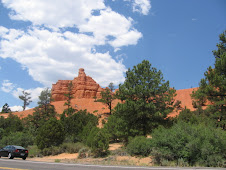


































No comments:
Post a Comment